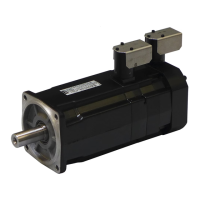13 – Pvd3675_Gb_Ey_Septembre_2017
3. TECHNICAL DATA
3.1. Motor selection
3.1.1. ATEX standard atmospheric conditions
EY motors are designed to operate in area:
• with a pressure between 80 kPa (0.8 bar) and 110 kPa (1.1 bar).
• air with normal oxygen content, typically 21 % v/v.
• air with a maximum relative humidity of 80%, without condensation.
In other conditions, please consult us.
3.1.2. Altitude derating
From 0 to 1000 m : no derating
Above 1000 m : please contact Parker for these specific applications.
3.1.3. Temperature derating
EY servomotors are designed to operate with a maximum ambient temperature of 40°C.
In case of using with an ambient temperature above 40°C and less or equal than 60°C,
a derating of performances is applied according to data recommended by Parker.
3.1.4. Thermal equivalent torque (rms torque)
The selection of the right motor can be made through the calculation of the rms torque
M
rms
(i.e. root mean squared torque, sometimes called equivalent torque).
This calculation does not take into account the thermal time constant of motor. It can be
used only if the overload time is much shorter than the copper thermal time constant.
The rms torque M
rms
reflects the heating of the motor during its duty cycle.
Let us consider:
- the period of the cycle T [s],
- the successively samples of movements i characterized each ones by the maximal
torque M
i
[Nm] reached during the duration
t
i
[s].
So, the rms torque M
rms
can be calculated through the following basic formula :
Example :
For a cycle of 2s at 0 Nm, 2s at 10Nm and a period of 4 s, the rms torque is:

